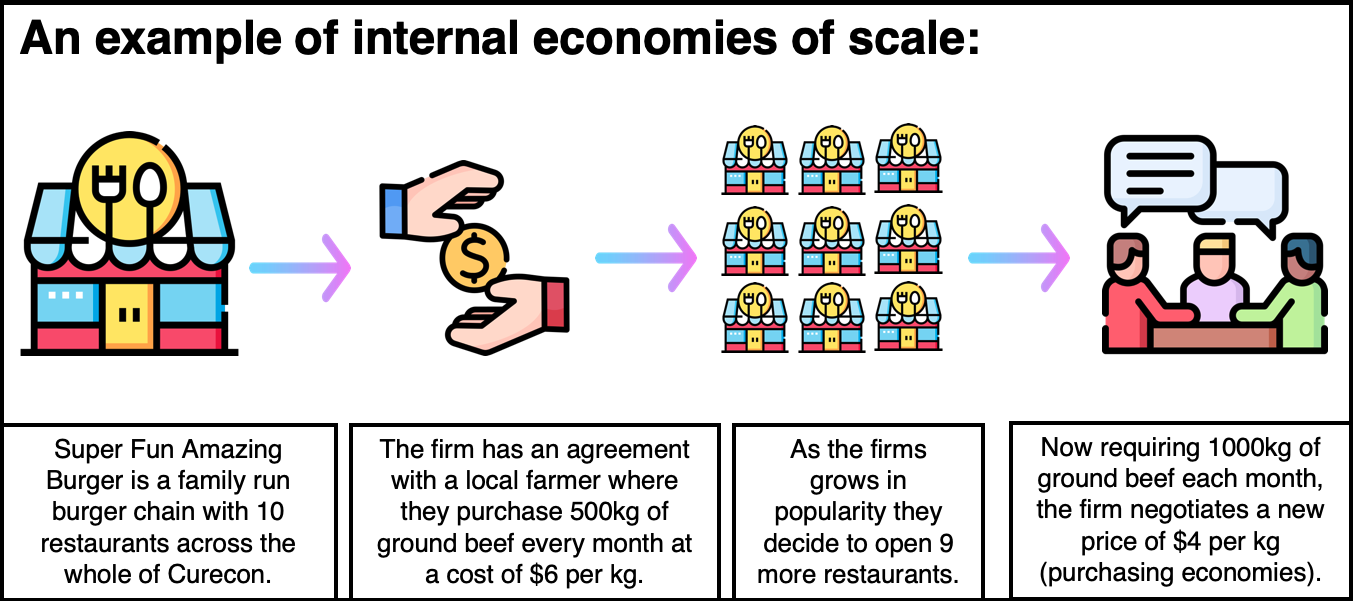
What is economies of scale?
External economies of scale describe factors beyond the control of a company that are present in the same industry and that lead to cost benefits. These factors may be positive or negative industry or economic trends. External economies of scale, therefore, are business-enhancing factors occurring outside a company but within the same industry.
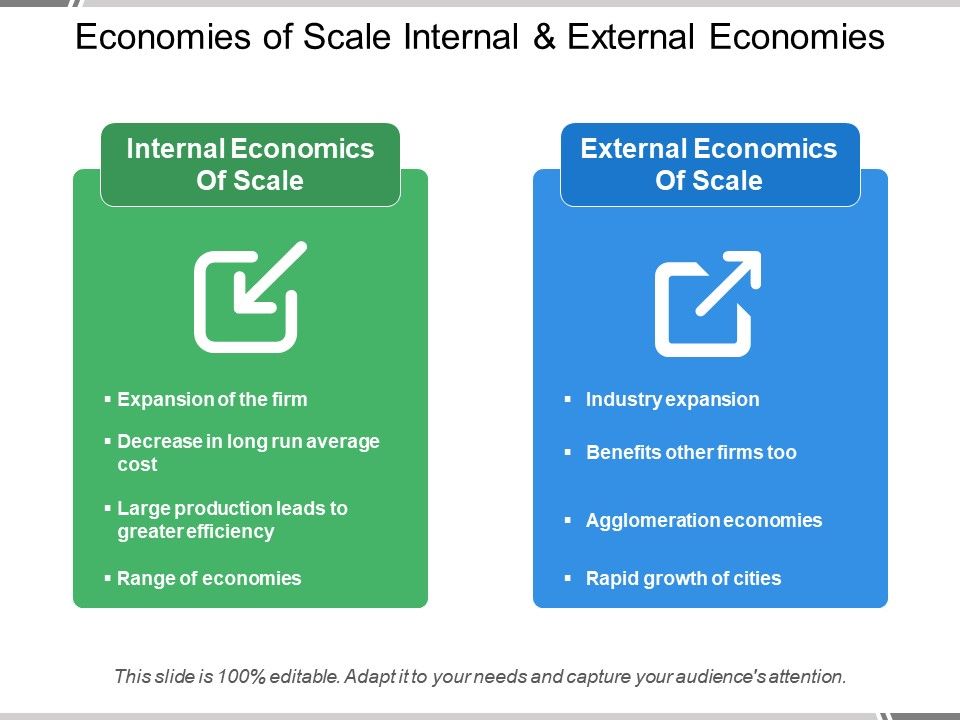
Economies Of Scale Internal And External Economies PowerPoint Slide Templates Download PPT
External economies of scale refer to the cost advantages that a group of firms or an entire industry can achieve due to their collective actions and the industry's growth. Its purpose is to benefit from factors beyond the control of any single company.

Economies of Scale Example Best 4 Example of Economies of Scale
Investopedia / Mira Norian Understanding Economies of Scale The size of the business generally matters when it comes to economies of scale. The larger the business, the more the cost savings..

External Economies of Scale Overview, Sources, Pros and Cons
External economies of scale refer to the cost benefits that a company experiences as a result of factors external to the firm but within its industry or geographical area. These economies occur when an industry's output increases, leading to benefits for all companies within that industry.

Economies of Scale Meaning and Types Owlcation
External Economies of Scale refer to benefits that come from external sources outside the control of the individual firm. Thus, they can lead to lower costs and increased productivity for all firms in the area. Example To illustrate external economies of scale, imagine a town that has multiple firms producing similar products.
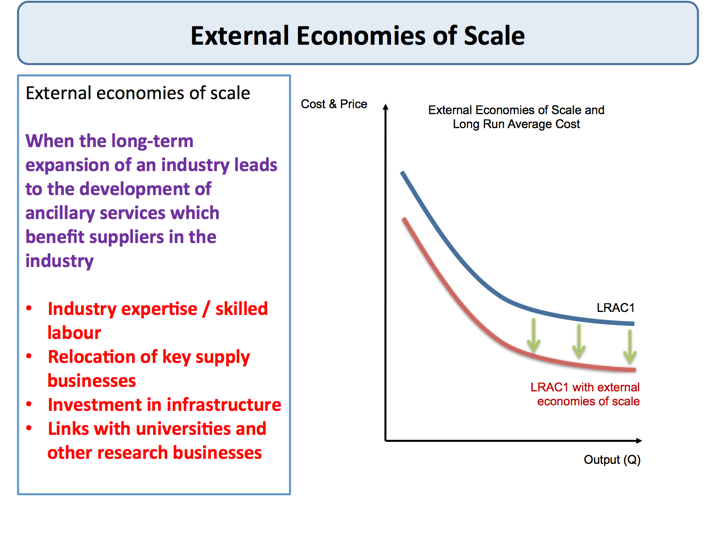
External Economies of Scale tutor2u Economics
External economies of scale, or EEOS, are factors that help decrease production costs while simultaneously increasing output volume and financial gains. These factors are outside of the control of individual companies and organizations. Instead, these are industry-wide changes that relevant firms can inadvertently benefit from.
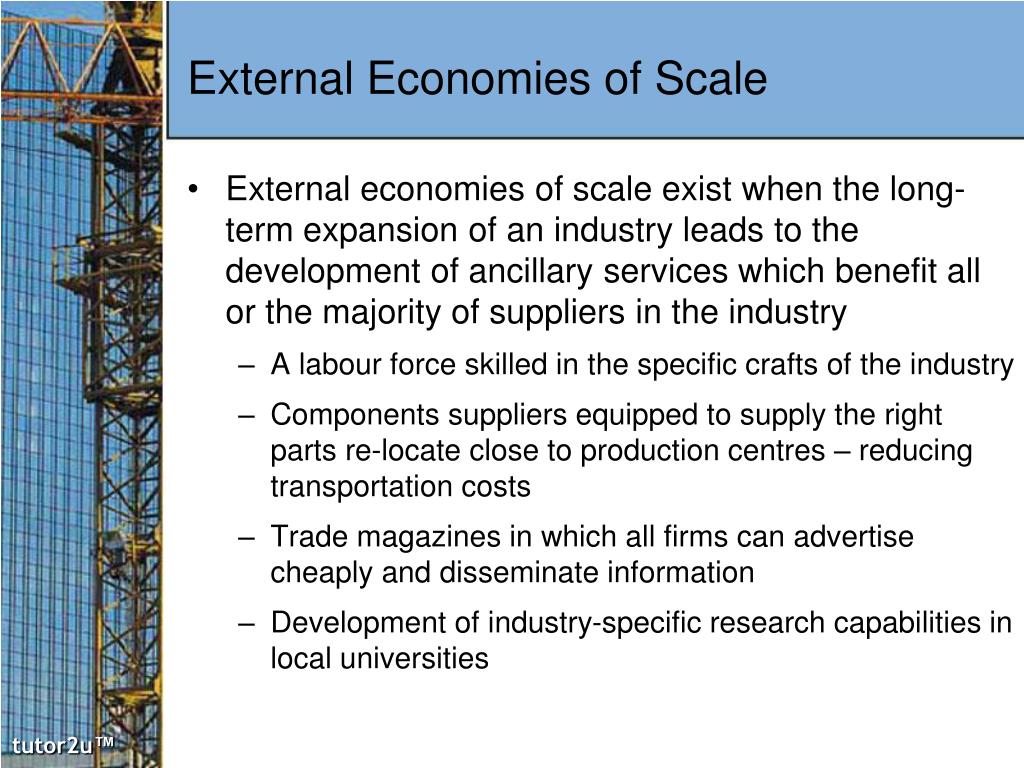
PPT Economies and Diseconomies of Scale PowerPoint Presentation, free download ID1063050
External economies of scale refer to factors that are beyond the control of an individual firm, but occur within the industry, and lead to a cost benefit. The prospect of external economies of scale often induces firms in the same industry to cluster together.
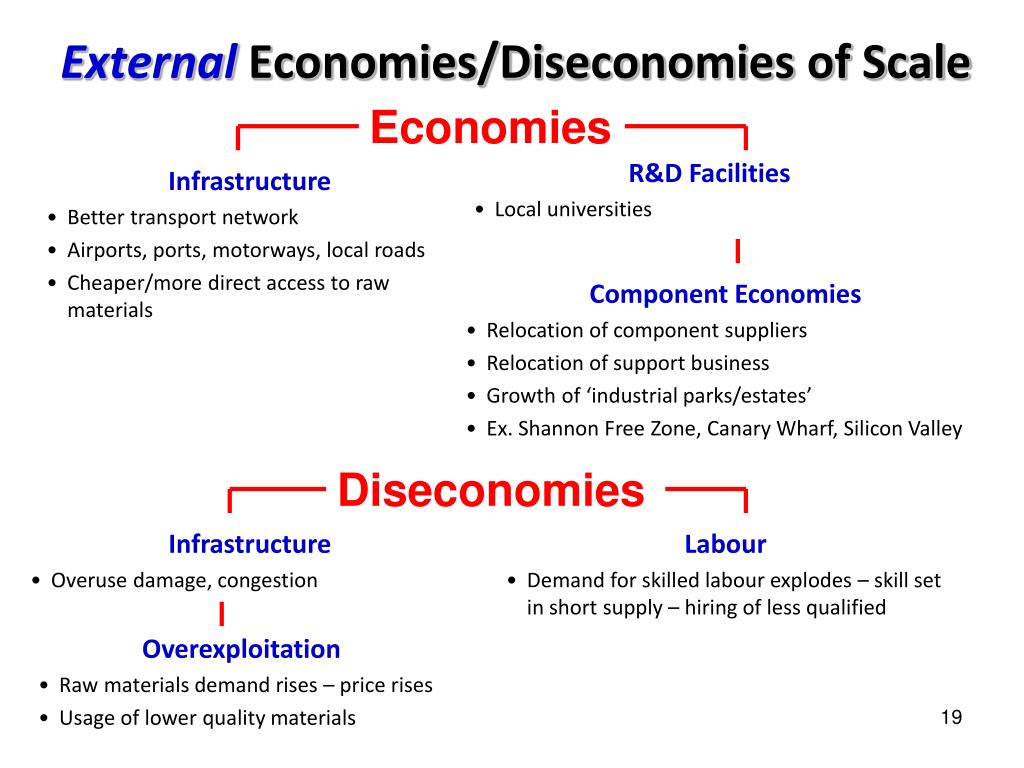
PPT Economics 101 (3) Economy of Scale PowerPoint Presentation, free download ID2750028
Some examples of external economies of scale include: Infrastructure: A firm may benefit from external economies of scale if it is located in an area with well-developed infrastructure, such as roads, ports, and airports, which can reduce the cost of transportation and logistics. Skilled labour: A firm may benefit from access to a pool of skilled labor in a particular region, which can reduce.

Economies of Scale tutor2u Business
There are two types of economies of scale: 1) internal economies of scale and 2) external economies of scale. Internal Economies of Scale → The costs savings that are company-specific, such as the following: Technical → Proprietary software and/or greater technological capabilities compared to the rest of the market

Economy Of Scale
External economies of scale are crucial as they drive industry growth, encourage regional development, reduce operational costs, and enhance competitiveness. Real-life examples such as Silicon Valley's transformation and the automotive industry in Germany exemplify the impact of these economies on innovation and international trade. The.

6.2 External Economies of Scale YouTube
External economies of scale occur outside of a firm, within an industry. Thus, when an industry's scope of operations expands due to outside developments, external economies of scale might.
/GettyImages-917884918-f87fc37f7d2f4253b0173c2c23fb03e0.jpg)
External Economies of Scale Definition
External economies of scale refer to the cost advantages and productivity improvements that businesses can achieve by operating in an environment where the surrounding factors positively impact their operations. Unlike internal economies of scale, which result from a company's internal factors such as increased production levels or improved.
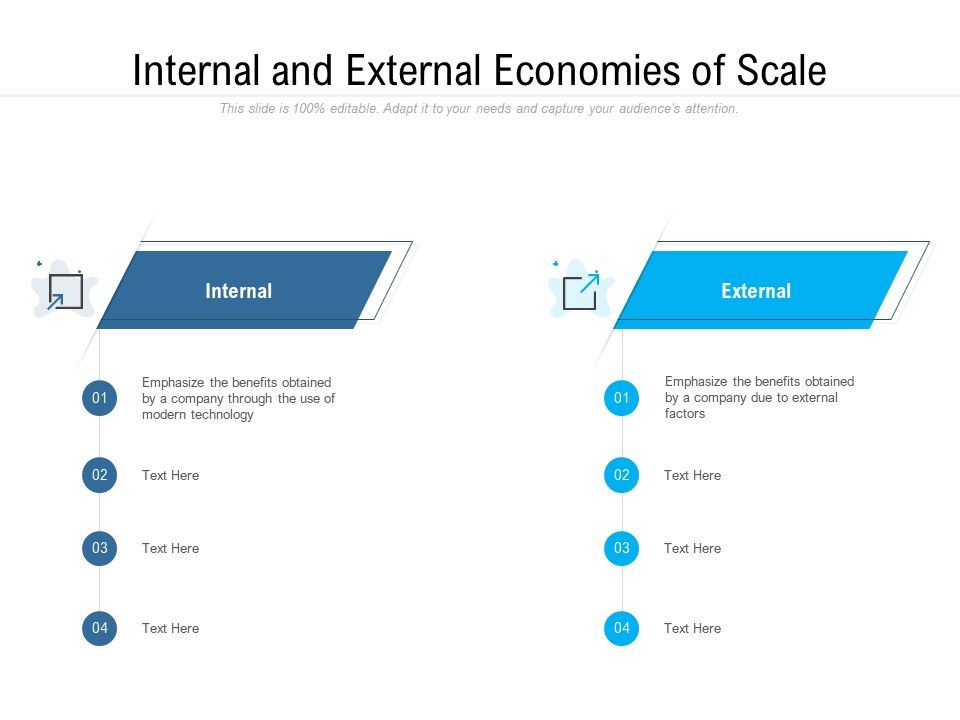
Internal And External Economies Of Scale PowerPoint Design Template Sample Presentation PPT
External economies of scale are generally described as having an effect on the whole industry. So when the industry grows, the average costs of business drop. External economies of scale can.

What Are Economies Of Scale And Why They Matter FourWeekMBA
What are External Economies of Scale? Talent, skill, management, education, and experience are not connected to a specific firm or external economies of scale and benefit all enterprises equally. Economies like these develop as a result of the industry's overall growth.

What Are External Economies of Scale? External Economies of Scale In A Nutshell LaptrinhX
Economies of scale - Wikipedia Economies of scale As quantity of production increases from Q to Q2, the average cost of each unit decreases from C to C1. LRAC is the long-run average cost. Part of a series on Economics History Outline Index Branches and classifications Concepts, theory and techniques By application Notable economists Lists
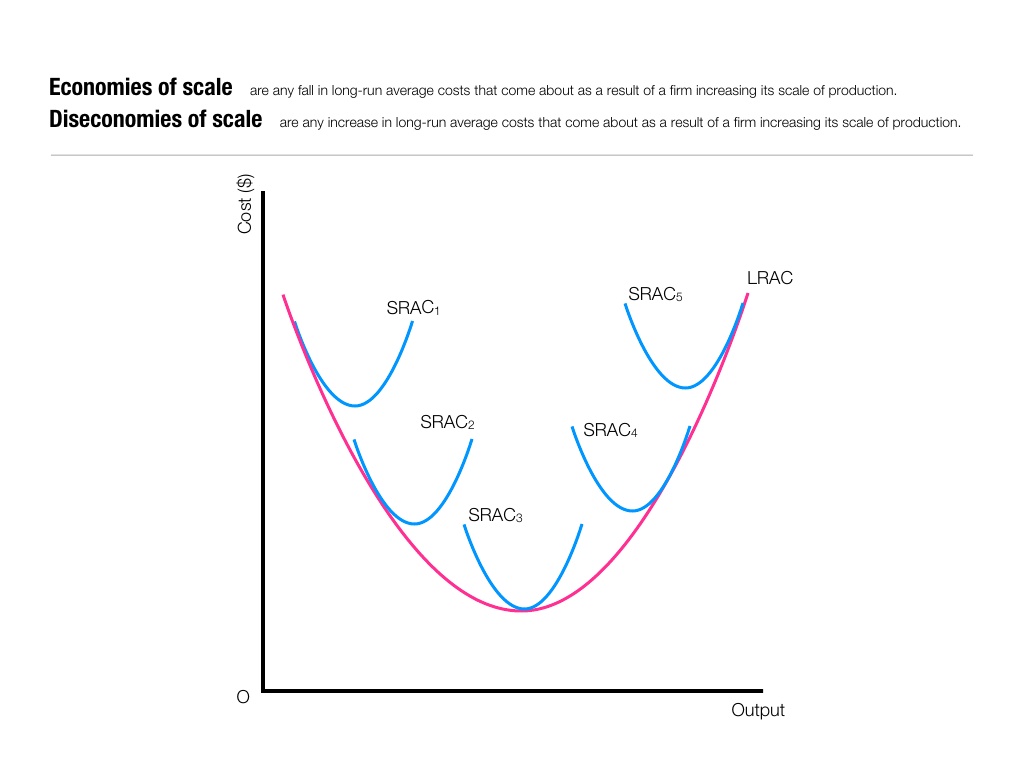
Economies of Scale Economic Investigations
1. Internal Economies of Scale This refers to economies that are unique to a firm. For instance, a firm may hold a patent over a mass production machine, which allows it to lower its average cost of production more than other firms in the industry. 2. External Economies of Scale